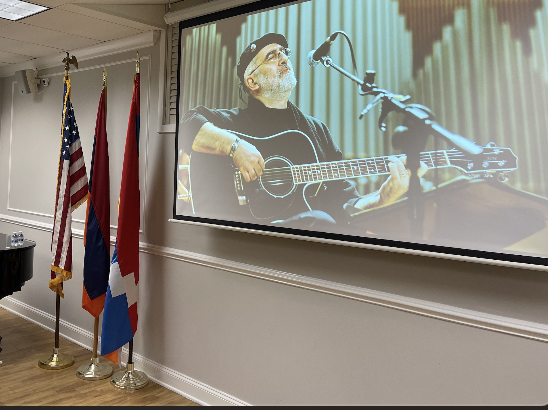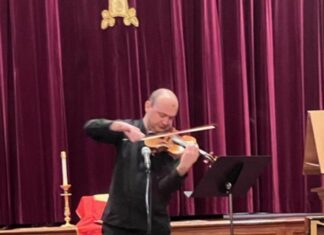WASHINGTON — Mesrop Mashtots created not only the Armenian alphabet, but also composed Armenian church music called sharagans (Armenian hymns or liturgical chants). This is known to Armenian clerics, but not to the general public. Armenian singer and composer Vahan Artsruni, known for his innovative approach to music, is working on publicizing cleric Mashtots’s musical heritage along with many other projects, related primarily to Gomidas Vartabed and Armenian poet Razmig Davoyan.
Artsruni has recently toured the United States, performing wonderful concerts in Boston, MA, Trumbull, CT, Bayside, NY, Manhattan, and several other places. The Armenian Music Festival of Rhode Island was the initiator of the tour.
“One of my goals is to publicize that Mashtots was a composer, and Gomidas was a poet, apart from being a musician,” noted Artsruni when we met after his concert at St. Mary Armenian Church in Washington, D.C. He had adapted 11 sharagans of Mashtots and converted ten poems of Gomidas into songs.
“Religious music commonly is for divine liturgies. In other words, if you are not present at church events, more likely you will not be exposed to that kind of Armenian culture. However, if church music is rearranged for different types of musical instruments, then it can be staged at secular events and get more access,” noted Artsruni when describing why he is so passionate about what he is doing.
With the early 1990s, former Soviet forms of censorship were over, opening up new opportunities for previously restricted national, religious, or otherwise banned musical works. Unfortunately, along with that, lots of low-quality songs would be allowed to flood Armenia. Often known as rabiz (the term has Russian origins), this low-quality product of often non-Armenian profile unexpectedly made extensive conquests, becoming quite popular among many people. Artsruni’s pure Armenian music based on acclaimed works of notable Armenians from Mashtots to poet Davoyan (1940-2022) is on the other side of this division.
“We should differentiate entertaining songs from spiritual and more contextual musical works. The entertaining ones will always be more massive and more popular. Spiritual and more meaningful music is limited to venues that carry a cultural and religious connotation,” noted Artsruni. He highlighted the importance of the media: if instead of popular art, they choose to broadcast songs and music of a higher spiritual value, that would, indeed, help us, added the Armenian musicians at the end of our talk.









